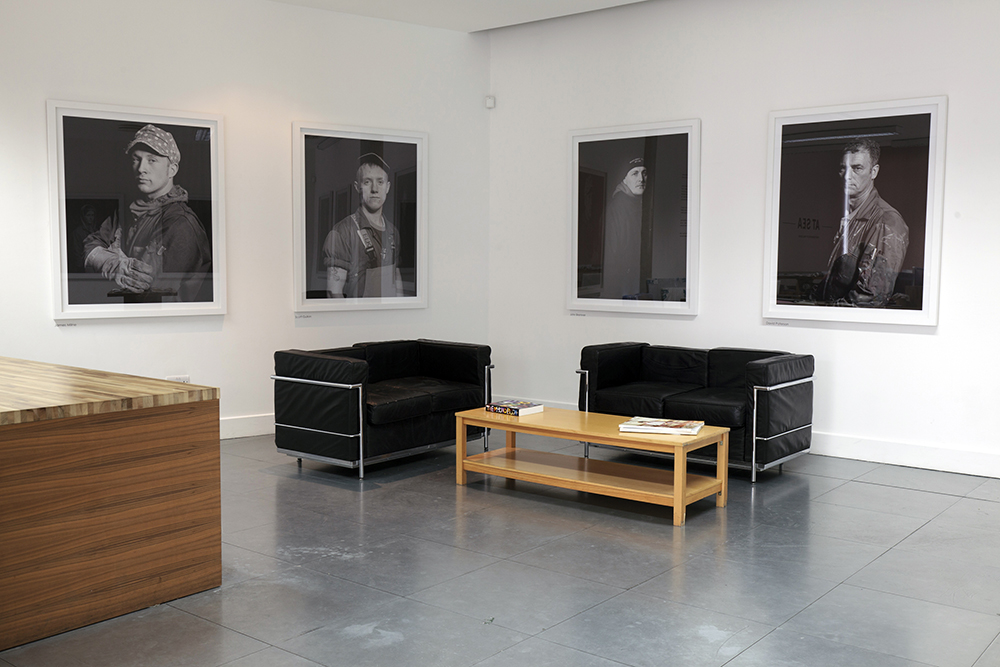
Here at theprintspace, we often get asked ‘How do I price my work?’. It’s a question that’s plagued many a photographer, and it’s especially hard to get it right early on in your photographic career when you have yet to establish a market for your work. There’s so much you have to take into account, so this week we’re speaking to our MD Stuart Waplington who has some advice about the subject:
The main thing to remember when considering your pricing point relative to the rest of the market is that it's important to compare apples with apples. Limited edition prints and open edition prints are very different propositions, and as a result, should be priced differently. However, the two are not mutually exclusive. Indeed, the sale of smaller open edition prints to a broader market is seen by some photographers as a promotional tool for the later sale of limited edition prints to collectors.
An artist’s objective should be to maximise the size of their audience and the income they are able to earn from their work. The key is to price and package your work for the audience you are trying to reach - smaller, more affordable open edition prints for consumer art buyers; and larger, premium priced limited edition prints for more serious collectors.
It is also important to be realistic. Unless you are an established photographic artist known to collectors with a proven secondary market in your work, and preferably with gallery representation, you will not sell your work for thousands of pounds per print - even in limited edition.
If you are at the early stages of your creative journey, you need to price your work accordingly. You should focus on getting your name out there by having your work on as many walls as possible, and the best way of doing that is to make it easy and affordable for the great art-loving public to own your work. This will allow you to establish a market in your work, after which you might start to attract the attention of more serious collectors, win gallery representation and start selling your work at collector prices.
Although there are no hard and fast rules on the optimum pricing point, here at theprintspace, we’ve learned a lot from experience with thehub, our new platform for print sales. Before thehub was born, we conducted a survey that revealed some interesting insights. More than 1300 respondents got back to us, and here are some of the results:

The above infographic shows the average print price that our clients were selling at prior to the launch of thehub. The prices equate to approximately a 600% markup on our print prices.
Another thing to remember is that price is only one of the dimensions that will dictate the volume of prints you sell. It’s also critical to reach a large audience. The next infographic shows the potential of social media as mechanism for promoting the sale of your work.
What these statistics show is that the clients of ours who are most successful at selling their work are also the most active on social media. Not only do they post images more than twice as frequently as less successful sellers, their social media audience is also larger. Of course, these two things are interrelated - the more more active you are on social media, the larger your audience (see our posts with advice on how to use social media to promote your art).

This is why we built thehub. thehub allows you to create customised and branded online art stores to sell prints of your work directly to the public, with all the print fulfillment and customer service handled by theprintspace. Of course, you can also embed art stores created on thehub into your website or blog, and it has been completely optimised for social media integration.
The key is to ensure that wherever your work is seen online, be it on social media, your blog or your website, there should be a call-to-action; your audience should have the opportunity to purchase a print. For emerging photographers, especially those without gallery representation, almost all of your sales will result from someone discovering your work online, so it’s crucial that you convert that audience into buyers of your work.
Getting your pricing point right plays an important role in the number of conversions you will achieve, but so does ensuring that there is a clear ‘call to action’ to purchase your work and as few barriers in the purchasing process as possible, something that thehub is designed to achieve. The final infographic reinforces just how important mastering the online channel is if you want to maximise sales of your work.

Finally, remember that as with creating your work, selling your work is a learning process. The great thing about being online is that everything can be measured very accurately. So wherever possible, make sure you use analytics and traffic data to make rigorous decisions about what works and what doesn’t. Although it might not come naturally to many artists, you’ll need to try and engage the right side of your brain to really maximise your online sales!
Hopefully we have given you some useful insights into pricing your work and ensuring that you fully capitalise on the opportunities to sell your work. In the beginning, as with most things in the creative industry, it’ll be trial and error but with time and effort and a watchful eye, you’ll find what works best for you.



